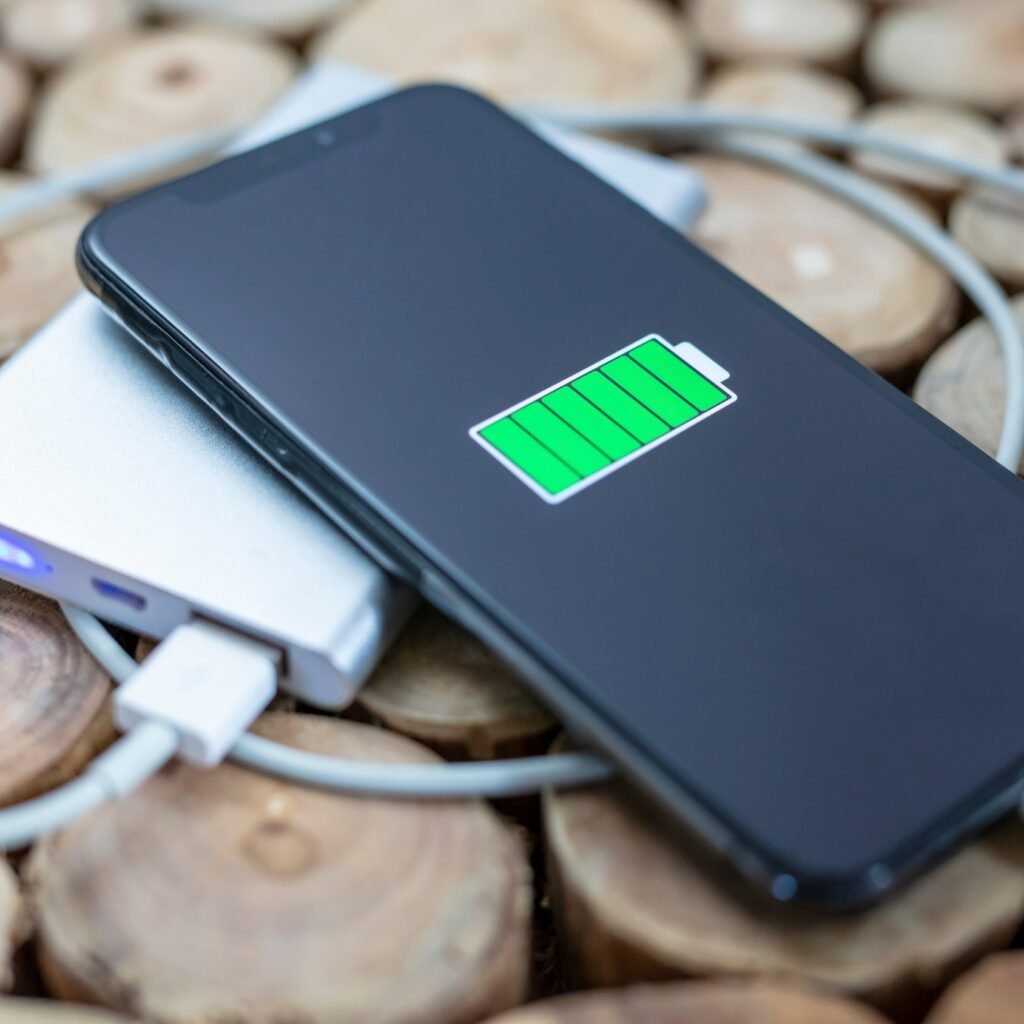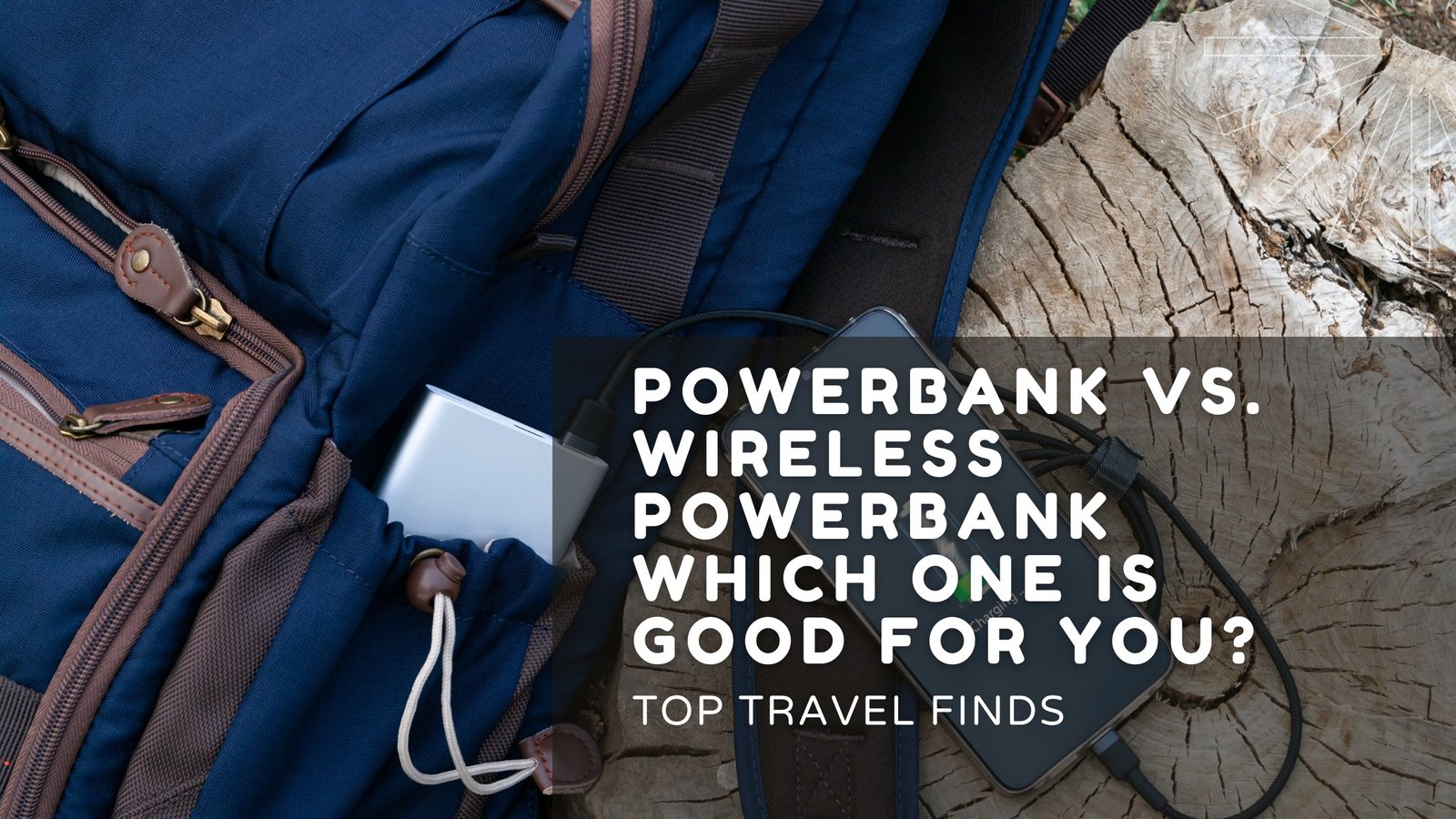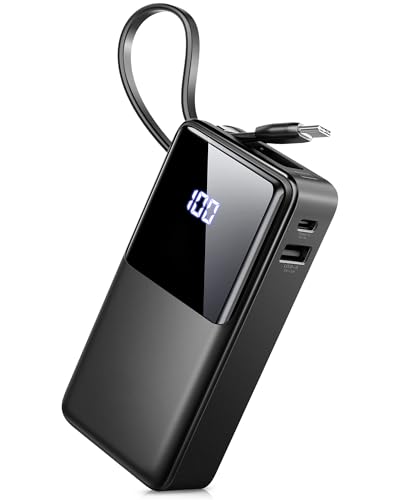Introduction to Power Banks
Power banks have emerged as indispensable gadgets in today’s world, primarily serving the purpose of providing portable charging solutions for a variety of mobile devices. With the increasing reliance on smartphones, tablets, and other electronic devices, users often find themselves in situations where access to a external power source is limited. In such scenarios, power banks prove to be essential for ensuring that devices remain charged and operational, especially for travelers, individuals who lead active, on-the-go lifestyles.
What is a Power Bank?
Before we deep dive into this. What exactly is a Powerbank? Essentially, a power bank is a compact, rechargeable battery pack designed to store electrical energy, which can be used to charge devices in times of need. In simple words it is just extending your battery life; For example your battery is almost dead or at just 10% and you are on the go with no charger. You grab your powerbank connect it to your phone and it charge your phone. Like you charge it when you are at home. And that is very helpful, because in this modern lift we very rely on simple things like battery life. And power banks make it easy to keep our devices charged wherever we go. You can easily put them in your backpack or suitsase. I wrote a nice comparison article about it. You can read it here.

This piece of technology was introduced in 2001 at CES (Consumer Electronics Show) In Las Vegas. Back in 2001 the models were very large and inefficient. Also in 2001 you didn’t had smartphones like you have nowadays. It was until 2010-2011 when Power Banks became more popular to a wider audience. Nowadays users can select from a wide wide array of options tailored to their specific needs. Traditional power banks typically require a physical connection to the device being charged, using a USB cable. In contrast, recent innovations have introduced wireless power banks, offering a new level of convenience by enabling users to charge their devices without the hassle of cords.
In this blog post I aim to explore the advantages and disadvantages of both traditional and wireless power banks, helping you to make an informed decision about which type is best suited to your lifestyle and charging requirements. As we delve into this comparison, understanding the characteristics of power banks will be crucial to determining the right choice for effective mobile device charging. See an example of 2 best selling Power Banks that you connect with a traditional USB cable.
2 Best selling power banks in 2025
- Speedy 30W Charging: Experience cutting-edge 30W fast charging technology—twice as fast as 5V/3A chargers. Boost an iPho…
- Ready for Endless Use: Crafted for durability, the 5.4-inch built-in USB-C cable is tested to endure over 10,000 bends, …
- Mighty Compact Power: This compact and powerful 10,000mAh power bank delivers up to 2 full charges for an iPhone 15, 1.9…
- From INIU–the SAFE Fast Charge Pro: Experience the safest charging with over 38 million global users. At INIU, we use o…
- Market’s Thinnest 10000mAh: The market’s one and only 0.5-inch power bank that breaks the limit of 10000mAh, easily slip…
- Only 5% Got USB-C IN&OUT: INIU is the only 5% of power banks got a USB-C IN&OUT port. Unlike others only recharge via US…

Understanding wireless power banks
During the years of charging technology has paved, the way for wireless power banks, which utilize Qi technology to recharge devices without the need for cables. But wait what? Qi? What is that?
This relatively new charging method is introduced in 2008 by the Wireless Power Consortium (WPC) It allows users to simply place their compatible devices on a designated charging pad to initiate the power transfer. In simple words the Qi technology is the transfer of energy through electromagnetic induction, making the charging process very easy and efficient. Users benefit from a more organized charging experience since there are no extra cables or connectors to manage.
What is Qi Technology?
This reletively new charging method allows users to simply place their compatible devices on a designated charging pad to initiate the power transfer. This method is introduced in 2008. Qi is actually a Chinese word and it’s translated to “life energy”. The core principle behind Qi technology is the transfer of energy through electromagnetic induction, making the process remarkably easy and efficient. Users benefit from a more organized charging experience since there are no tangled cables or connectors to manage. In 2010 the first Qi compatible devices hit the market and a few years later it got a much wider adoption to other brands. In 2017 Apple added Qi technology to their iPhones started with the iPhone 8 and iPhone X.
One of the biggest primary advantages of wireless power banks is their convenience. They eliminate the hassle of finding the right cable, which is particularly useful in today’s fast-paced environment. Wireless charging offers a seamless experience, allowing users to charge your smartphone, tablets, and other compatible devices on-the-go with almost minimal effort. So If you are on a crowded train or at a busy coffee shop, you simply place your phone on the wireless power bank and immediately begins the charging process. Later in this article I will explain the pros and cons for wireless powerbanks and traditional power banks.
Like I explained wireless power banks have shown compatibility with a very wide range of devices, including smartphones from big brands such as Apple and Samsung, as well as other gadgets equipped with Qi technology. This broad compatibility means fewer devices need to be charged using traditional wired methods, further enhancing the practicality of wireless charging solutions.
Recent improvements in wireless charging technology have also contributed to an improved user experience. Enhanced efficiency, faster charging speeds, and better energy transfer are just a few of the innovations that have made wireless power banks more attractive to consumers. Additionally, manufacturers are increasingly designing these devices to be even more compact and portable, making them an ideal companion for travelers and individuals with active lifestyles. Every day the technology continues to develop, and wireless power banks are expected to gain even wider adoption, providing users with an effortless charging solution.
Traditional power banks explained
Traditional power banks serve as essential portable charging solutions, designed to deliver a convenient way to recharge a variety of devices, including smartphones, tablets, and other electronic gadgets. These devices are equipped with a battery and usually incorporate various types of technology to ensure efficient power transfer. With the advent of mobile technology, power banks have become increasingly popular, providing users with a dependable means of keeping their devices charged while on the go.
The technical explanation of a powerbank is that it includes a built-in lithium-ion or lithium-polymer battery. These batteries are favored for their lightweight nature and high energy density, enabling them to store significant amounts of energy in compact formats. Traditional power banks are available in various capacities, typically ranging from 2,000mAh to over 50,000mAh, allowing users to choose one based on their power requirements. mAh = milliampere-hour. It’s a unit that measures how much electric charge a battery can hold. In simple terms: Think of mAh like the size of a gas tank, but for electricity. A bigger mAh number means the power bank can store more energy. So, it can charge your devices more times before it runs out. This means that if you have a PowerBank that has 10,000 mAh it can charge for example an iPhone 15 up to 3 full chargers. But if you buy one with 50000 mAh or more it can charge your same iPhone 15 up to 15 full chargers.
10000 mAh Traditional Power Bank
- 【10,000mAh Battery Capacity & Compact Portable Design】This power bank features a 10,000mAh battery capacity while mainta…
- 【PD 15W Bi-Directional Fast Charging & Healthy Charging Mode】 This 5V/3A power bank features bi-directional fast chargin…
- 【Safe System & High-Definition LED Digital Display Portable Charger】This mobile battery pack with a built-in cable featu…

50000 mAh Traditional Power Bank.
- High Capacity 50000mAh Power Bank: The 50000mAh portable charger ultra-high massive capacity charging bank provides 15 c…
- Latest PD 22.5W Super Fast Charging: 50000mAh battery bank adopts the latest Super Charger Protocol and Fast Charger Pro…
- Multiple Charging Ports 4 Outputs and 3 Inputs: Battery pack provide Micro, Lightning and USB Type C inputs, you can fle…

Pros and Cons for Traditional Power Banks.
My personal experience with traditional powerbanks is that it is great in speed. Like I mentioned if you have one that can up to 50000 mAh you can rely on 13-15 full chargers with that power bank. But you always have to connect your powerbank to your phone. And here is the problem. What if your charging port is not working properly? This happends with iPhones that i owned during the years. After a while the charging port of my iPhone did not work properly. This means that if you connect a Power Bank with a cable on a not so good working charging port it will not fully charge the power bank.
When selecting a traditional power bank, consider factors such as capacity, number of outputs, size, and weight. Because the higher the number of mAh the heavier the powerbank is. You should evaluate your device’s battery size and check if it match with the appropriate power bank. Ultimately, traditional power banks offer reliable and efficient charging solutions, making them an excellent choice for those seeking a practical way to maintain their devices’ power levels throughout the day.
✅ Pros:
- Lightweight & portable if you choose one that is 10.000 mAh or less.
- Great for short trips or daily use
- Charges most phones up to 2–3 times. (50.000 mah Power Banks even up to 15 full chargers)
- Usually airline-approved
- Often very affordable
- Protection against overheating and short-circuiting.
❌ Cons:
- Can’t charge tablets or laptops fully (This counts mostly for the 10.000 mah powerbanks or less)
- May not last for very long travel days
- Fewer output ports (1–2 devices at a time)
- Your charging output on your phone needs to work properly
In terms of output, power banks generally feature USB ports, which are standard for connecting devices. Most models include one or more USB-A output ports, while newer versions may also provide USB-C ports that support faster charging capabilities. They often come equipped with advanced charging technologies, such as Quick Charge and Power Delivery, enabling compatible devices to charge more rapidly than traditional USB outputs. Additionally, many power banks incorporate safety features that protect against overcharging, short-circuiting, and overheating.
Comparison table traditional powerbanks form 10,000 mAh – 45000+ mAh
| Capacity | Portability | Phone Charges | Laptop Support | Flight-Safe |
|---|---|---|---|---|
| 10,000 mAh | ⭐⭐⭐⭐⭐ | 2–3x | ❌ | ✅ Yes |
| 20,000 mAh | ⭐⭐⭐ | 4–6x | ⚠️ Partial | ✅ Yes |
| 30,000 mAh | ⭐⭐ | 7–9x | ⚠️ Some | ⚠️ Check model |
| 45,000+ mAh | ⭐ | 10–15x | ✅ Yes (with Power Delivery) | ❌ Usually No |
Pros and Cons for wireless power banks
✅ Pros:
- No cables needed – Just place your phone on top to charge — super convenient
- Great for on-the-go. Charge while walking, on a train, or in a coffee shop without fiddling with wires. You just attach your powerbank to the back of your phone.
- Clean & minimal setup– Less clutter in your bag or on your desk.
- Many offer both wireless & wired charging– Some models give the flexibility for charging multiple devices at once.
- Perfect for MagSafe-compatible iPhones– they snap into place and charge efficiently (on MagSafe models)
❌ Cons:
- Slower charging speedWireless charging is generally slower than wired
- Less efficient Wireless power loses more energy as heat = fewer total charges per full battery
- Needs alignment Phone must be positioned just right to charge. Can easily disconnect if bumped or moved
- Lower capacity in smaller models Wireless power banks are often smaller = fewer charges
- Doesn’t work with all devices Only works with Qi-compatible phones/devices, Won’t charge most earbuds, laptops, or older phones wirelessly
Comparison of Charging Speeds
When evaluating the charging speeds of traditional power banks and wireless power banks, several factors play a crucial role, including wattage, output types, and the inherent characteristics of wireless technology. Traditional power banks typically use wired connections, such as USB or USB-C ports, to transfer power directly to devices. This direct connection often allows for higher charging speeds. For example, a power bank with a high wattage output can charge devices like smartphones or tablets significantly faster than their wireless counterparts. Many traditional models offer fast charging capabilities that leverage advanced technologies, such as Power Delivery (PD), to optimize energy transfer rates.
On the other hand, wireless power banks utilize inductive charging technology, which can impact the overall charging speed. While they offer convenience by eliminating the need for cables, they tend to have slower charging rates due to the energy loss that occurs during transmission. The efficiency of this method is influenced by factors like alignment of the device with the charging pad, as well as the specific technologies employed by the wireless power bank. Although some models support fast wireless charging protocols, they often still do not reach the speed of wired alternatives.
In addition to wattage and output types, the compatibility of the devices being charged is essential when comparing speeds. Not every smartphones or tablets support fast charging, meaning the difference in performance may not be fully realized unless both the power bank and the device are compatible. In terms of practicality, if time is a critical factor in your charging needs, a traditional power bank typically emerges as the faster choice, especially for power-intensive gadgets. Ultimately, understanding these nuances in charging speeds can assist consumers in selecting the right option for their specific requirements.
Power Bank Charging Speed Comparison in a Table
| Feature | Wireless Power Bank | Traditional (Wired) Power Bank |
|---|---|---|
| Charging Method | Wireless (Qi or MagSafe) | USB-A, USB-C, or Lightning cable |
| Typical Charging Speed | 5W – 15W | 18W – 100W (with PD) |
| Speed for Smartphones | ⚠️ Slower (1.5x to 2x longer) | ✅ Faster (can be quick charge) |
| Speed for Tablets | 🚫 Often too slow | ✅ Supported (esp. 20W+ models) |
| Laptop Charging | 🚫 Not supported | ✅ With Power Delivery (30W–100W+) |
| Heat Efficiency | ❌ Less efficient (more heat loss) | ✅ More efficient |
| Charging While in Use | ✅ Convenient, no cables needed | ⚠️ Possible, but needs a cable |
| Device Compatibility | Qi-compatible only | Any device with charging cable |
| Alignment Sensitivity | ❌ Needs precise placement | ✅ Secure with cable connection |
| Ideal For | Casual phone top-ups, day trips | Fast full charges, travel, laptops |
Portability and Design Considerations
When evaluating power banks, both traditional wired and wireless variants, portability and design play crucial roles in determining the most suitable option for your charging needs. The size, weight, and overall design of the power bank can significantly influence your experience. Traditional power banks typically come with a compact design that allows for easy handling and storage in pockets or bags. They are often engineered to be lightweight, making them ideal for daily use and travel.
On the other hand, wireless power banks tend to be bulkier due to the additional technology required for efficient charging without cables. Their design often includes integrated charging pads, which can add to the overall thickness and weight. This can result in a trade-off, as the convenience of going wireless may come at the cost of added weight and less portable designs. However, advancements in technology have led to the development of slimmer and lighter wireless options, which may still fit comfortably in a small bag or purse.
Another critical aspect to consider is the ease of use when handling both devices. Wireless power banks offer the convenience of simply placing your smartphone or other devices on the charging pad, reducing the hassle of dealing with tangled cables. This can be particularly beneficial for those who are often on the go. Conversely, traditional power banks require a USB cable to connect to devices, which might be less convenient in fast-paced environments. And you need to rely on your charging port of you mobile phone.
Summary
- Wireless is convenient, but slower and less efficient
- Wired (traditional) power banks are faster, stronger, and more versatile
5 Best Traditional Power banks in 2025
5 Best Wireless Powerbanks in 2025
Device Compatibility and Charging Options
When considering between traditional power banks and wireless power banks, one must evaluate the compatibility of these devices with various smartphones, tablets, and other electronic gadgets. Traditional power banks typically connect through USB ports, enabling charging for a wide range of devices, including older models that may not support wireless charging. This advantage makes them versatile, as they can directly charge devices regardless of their wireless capability.
On the other hand, wireless power banks cater primarily to devices equipped with Qi wireless charging technology. Smartphones from brands like Apple, Samsung, and newer models from numerous manufacturers often support wireless charging, making them ideal candidates for this type of power bank. However, users should be aware that not all devices are compatible with wireless charging, and therefore, identifying a device’s capabilities prior to purchase is essential. For instance, older smartphones or those without updated charging capabilities may only be charged using a traditional power bank.
Another critical factor to consider is the added features offered by these power banks. Traditional models often include multiple USB ports, accommodating several devices simultaneously, which is particularly beneficial for users with multiple gadgets. Think like charging an iPad, laptop or even an smart watch at the same time. Additionally, some power banks feature pass-through charging, allowing them to charge while connected to a power source. A functionality that enhances convenience for users who need to keep their devices powered during recharging sessions.
In contrast, while wireless power banks typically allow for easy placement of a device on their surface for charging, they may not provide the same degree of flexibility in terms of the number of devices charged at once. When selecting a power bank, understanding device compatibility and available charging options will significantly influence your decision, ensuring that you choose a product that best meets your needs.
Conclusion: Making the Right Choice for You
In navigating the choice between a traditional power bank and a wireless power bank, it is essential to consider several key factors that align with your individual needs and preferences. Both options come with their unique advantages and drawbacks, each catering to different user profiles and charging habits. Traditional power banks typically offer faster charging speeds and a broader range of capacity options. They are ideal for users who require consistent performance and are often working with higher power devices.
Wireless power banks provide a significant degree of convenience as they allow for cable-free charging. This option may appeal to those who prioritize ease of use and minimize cable clutter. However, it is essential to note that wireless charging can be slower and may require precise device placement to be effective. Therefore, the decision between the two often hinges on your lifestyle and how you intend to utilize these devices.
When deciding which power bank is right for you, assess your charging habits. If you frequently find yourself in situations where speed is essential, a traditional power bank may complement your active lifestyle better. On the other hand, if you are inclined towards minimalism and ease of use, a wireless power bank could suit you well. Additionally, having a clear understanding of the devices you will be charging and their power requirements can significantly influence your decision.
Ultimately, the right choice resides in reflecting on your personal circumstances and preferences. By aligning your selection with your daily routines and technological needs, you can ensure that you invest in a power bank that will effectively support your charging requirements.
My Personal recommondations
I travel a lot and my personal opinion is that Qi wireless chargers are very good and very reliable when you travel. I recommend 2 that are both very great:
- Smaller Than Ever: Anker’s new MiniCell technology delivers identical charging performance with fewer components. This m…
- Pocket-Sized Power: Slim enough to snap to your phone and slip into your pack, purse, or pocket.
- Strong Attachment: Equipped with ultra-strong magnets that firmly attach to the back of the iPhone 15 or 14 so you can s…

- Designed for iPhone 16-12 Series: With a 10N strong magnet inside, this magnetic power bank securely attaches to the bac…
- Double Power for The Whole Day: with an enormous battery capacity of 10000 mAh, you can fully charge iPhone 15 Pro up to…
- Skin-friendly & Slim: The silicone material is soft and skin-friendly, ensuring a comfortable charging experience while …

The reason is that the magnetics are very strong and solid and it is so easy to travel. I have a iPhone 15 Pro Max with already a great battery capacity. The Anker 621 is only 5000 mAh but it really gives that extra on the day that I really love. Also the price of this charger is really good. But his power bank supports also older iPhones like the iPhone 12. Also the UGREEN is very strong and very small. It has higher capacity of 10.000 mAh and also supports older iPhones like the iPhone 12.
I hope this blog helped you make the right choice when it comes to finding the perfect power bank. Whether you’re a casual traveler, a digital nomad, or someone who just wants reliable backup power on the go, choosing the right mAh capacity and features can make all the difference. From compact 10,000 mAh models to heavy-duty 50,000 mAh beasts, the best power bank is the one that fits your lifestyle. You might also like this article about the Top 5 Travel Tech Essentials in 2025.
This post contains affiliate links. That means if you click and purchase through one of the links, I may earn a small commission at no extra cost to you. Thank you for supporting Top Travel Finds!




















One Comment